
Film Review | Rogue One
Producers: Lucasfilm Ltd., distributed by Walt Disney Studios
Runtime: 133 minutes
MPAA Rating: PG-13
EE Critic Score: 9/10
Rogue One is the second Disney-produced Star Wars film, and the first of their stand-alone anthology films. And I’ll say this before I get any farther: It’s quite good. It is a very different sort of movie than the saga proper, but it is a great movie in its own way.
This is the immediate prequel to the first Star Wars movie, Episode IV: A New Hope. It elaborates on the story told in ANH’s opening crawl, in fact.This is also unequivocally a war movie. Yes, yes, I know, Star Wars has “war” right in the title, and every movie has featured some battle sequence. But the saga proper are action movies (The Phantom Menace is best analyzed as a children’s film, but it is still an action movie). And there’s a difference between action movies and war movies: Action plots center on character, whereas war plots center on mission. Rogue One is totally mission focused. Once it gets to the mission, anyway.
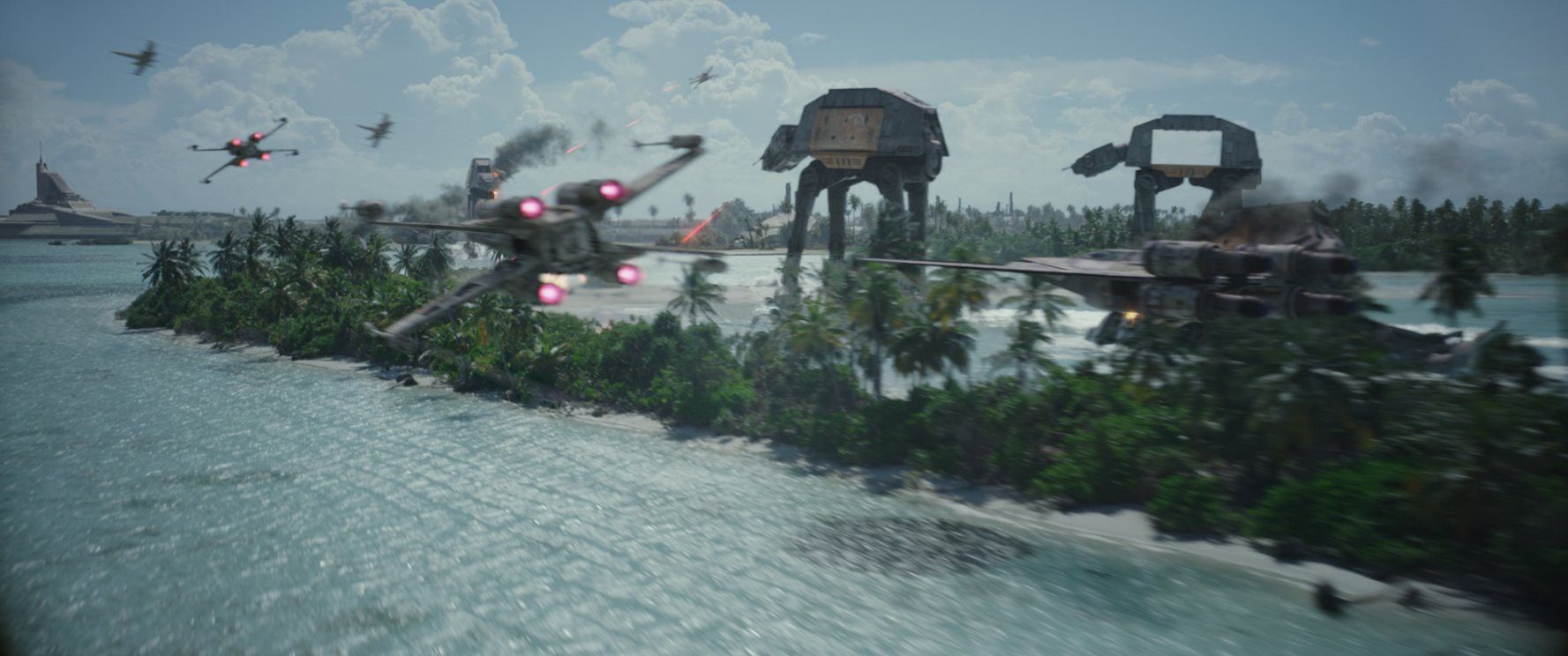
Synopsis
The central hero of Rogue One is Jyn Erso (Felicity Jones), the daughter of reluctant Death Star engineer Galen Erso (Mads Mikkelsen). The elder Erso, so far as I could gather, was likely an engineer for the Republic military, who eventually left the Empire to hide as a farmer. The opening scene shows Imperial officer Orson Krennic (Ben Mendelsohn) arriving at the Erso farm to retrieve the family so Galen can continue his work. Galen refuses to leave willingly; his wife, Lyra (Valene Kane), is killed when she pulls a blaster on the Imperials. His young daughter Jyn escapes the farm as Galen is taken into custody. From here we flash forward to see that Jyn has wound up in an Imperial jail for her own, unrelated reasons.
Following this opening we are hit with a series of mostly unconnected scenes introducing some other characters: ruthless Rebel assassin Cassian Andor (Diego Luna), turncoat Imperial shuttle pilot Bohdi Rook (Riz Ahmed), and paranoid anti-Imperial terrorist leader Saw Gerrera (Forest Whitaker).
The main story kicks off when Jyn Erso is rescued from an Imperial labor camp by the Rebel Alliance, who draft her into a mission to contact Saw Gerrera, who raised Jyn after her father’s capture, and who is now holding Bohdi Rook captive, along with a message from Jyn’s father concerning the Empire’s superweapons project. Jyn is paired with Andor, and they set off, along with Andor’s reprogrammed Imperial tactical protocol droid, K-2SO (Alan Tudyk), to Jehda, an ancient Jedi world from which Gerrera is operating from, carrying out bombings on Imperial convoys transporting kyber crystals, which were stockpiled on Jedha by the Jedi for use in the production of lightsabers, and are now being seized by the Empire for use in the production of the Death Star’s superlaser.
Our heros get caught up in one of Gerrera’s attacks, along with two former Jedi employees: the blind warrior monk Chirrut Îmwe (Donnie Yen) and his more worldly companion Baze Malbus (Jiang Wen). All these are brought captive to Gerrera, who recognizes Jyn, but fears she has been sent to kill him. Once his fears are assuaged, he shows Jyn the message Rook had brought from Galen.
From his position as a lead engineer on the Death Star project, Galen Erso had built a flaw into the superweapon such that the entire battle station can be destroyed by a single, well-placed shot from a starfighter. The Rebels just need to retrieve the plans for the Death Star to know how to destroy it.
Meanwhile, on the Death Star, Grand Moff Wilhuff Tarkin (Guy Henry) has taken command of the battle station from Director Krennic, who had overseen its construction. Krennic complains to Darth Vader (Daniel Naprous, voiced by James Earl Jones), who is unsympathetic. Tarkin orders the city of Jedha destroyed by a low-power test of the superlaser.
The superlaser destroys the city and much of the surrounding area, including Gerrera’s hidden fortress. Jyn, Andor, Rook, Îmwe, Malbus, and K-2SO escape the destruction. Gerrera himself remains, tired of running and fighting.
Our heroes head to Edu, the site of the Imperial engineering facility where Galen works. Unbeknownst to Jyn, Andor’s mission is not to rescue Galen, but to kill him to halt progress of the Death Star’s production. Andor, while in position to shoot Galen, decides instead to trust Jyn’s word about the message from her father, which was lost in the destruction of Gerrera’s home. Jyn makes an attempt to retrieve her father herself, but Galen dies in an airstrike from Rebel X-Wings.
From Edu, Jyn and her companions return to Yavin 4, where Jyn tries but fails to persuade the Alliance leadership to approve a mission to retrieve the Death Star plans from a storage facility on Scarif. Andor assembles a squad of fellow Rebel SF operatives, who go with Jyn and her companions on their own, unsanctioned mission to Scarif. While pressed by Rebel air control who they are, Rook gives the group the callsign “Rogue One”.
A battle ensues on the beaches of Scarif when Rogue One land on the outskirts of the Empire’s island base. They set off bombs on the landing platforms set radially around the facility’s central communications tower, to give the appearance of greater numbers. Krennic leads the Imperials from this tower, sending in his own elite bodyguard to fight alongside stormtroopers. Eventually, the main Rebel fleet, under the command of Admiral Raddus (Paul Kasey, voiced by Stephen Stanton), arrives over Scarif to provide support and receive the plans.
Andor and Jyn retrieve the plans as K-2SO falls to stormtrooper fire outside the archive. This kicks off a series of deaths of the Rogue One heroes, leading to a face-off with Jyn and Andor fighting Krennic for control of the Scarif base’s transmittor. Just before the Scarif base is destroyed by another low-power Death Star attack, they succeed in transmitting the plans to the Rebel fleet above, where it is written to the drive R2-D2 carries through A New Hope, which is passed off to the crew of the Tantive IV, all while Darth Vader personally chases down and slaughters the couriers in an attempt to stop them.
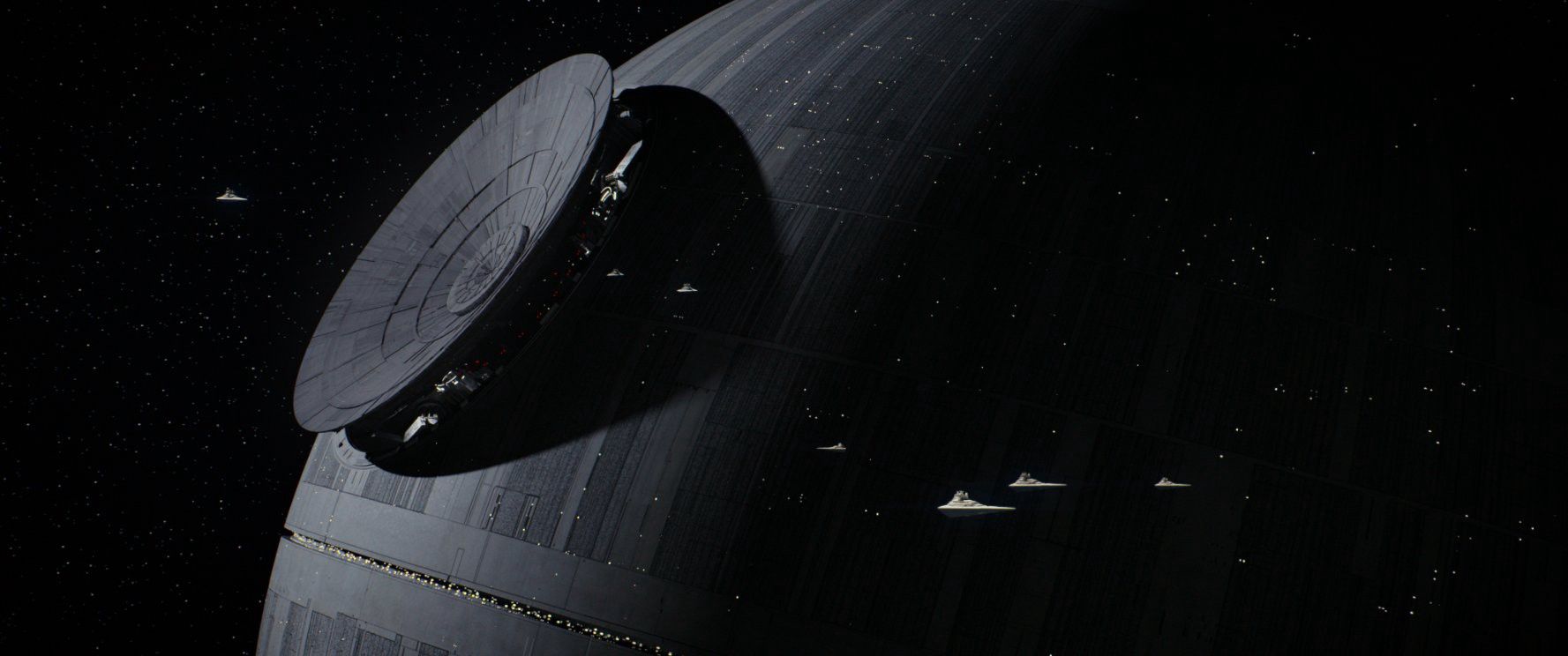
Analysis
Characters
This film is not a character-driven story, which has been the main point of a lot of criticism so far. Considering that every main character winds up dead by the end of the film, I’m really not sure I mind this. That is, deep, engaging characters are always welcome, but there’s a difference between characters which we need to care about because their development is the backbone of the story, and characters who we might like to care about but who serve the plot, rather than the other way around. For instance, in previous Star Wars movies, it’s important to care about _____ Skywalker because the plot of the movie is how _____ Skywalker responds to being taken from a simple life in the desert into a broader world of starship pilots and Jedi. Here, we might not know any great deal about the Ersos but I didn’t feel I needed to. Their actions advance the plot, and one couldn’t really argue that their presence is purely incidental, but the story of Rogue One is the story of the Rebel Alliance’s key first victories against the Empire leading up to A New Hope. This is a mission-centered movie whose plot is a lot bigger than the sum of the personal stories of the main characters, so those characters take a bit of a backseat to it.
That said, I’m rather surprised to hear from many reviewers that they couldn’t remember most of the characters names, let alone many other personal details. So, to show why you should come to the Edwards Edition for movie reviews instead of any of the numerous other review sites, like the ones that put out a review in the same month as the movie is released, I shall now give a list of the new characters from memory:
- Jyn Erso: The main hero. Jyn is a young Human woman who lost her parents to the Empire and grew up under the guidance of Saw Gerrera, before setting out on a life of aimless crime before being recruited by the Rebel Alliance to help in their mission to stop the development of the Death Star. She inspires the Rebels to challenge the Empire directly, and is personally instrumental in their first major victory.
- Orson Krennic: The main villain. Krennic is the director of the Death Star project, and it is he who killed Jyn’s mother and took her father captive to further his goals. His authority on the Death Star is taken by Governor Tarkin, which places him in two conflicts: stopping the Rebels from destroying his legacy and stopping his superiors from stealing it. Other than that he’s a fairly standard mid-level Imperial commander, though I liked Krennic more than I liked Armitage Hux.
- Cassian Andor: A Rebel spy and assassin who has, by his own words, been doing unforgivable things for the Rebellion since he was six years old. Andor is an interesting character, a totally mission-focused soldier with little concern for people’s lives, be they friend or foe, if they stand in the way of the mission. Toward the middle of the film, Jyn Erso says with this mentality, he might as well be a stormtrooper.
- K-2SO: A reprogrammed Imperial droid. His personality is something of a less polite, more courageous C-3PO, or perhaps better, and R2-D2 who can talk. He has most of the humorous scenes.
- Chirrut Imwe: A former Guardian of the Whills (essentially a Jedi-adjacent group tasked with defending Jedi archaics on Jedha). Imwe remains committed to Jedi principles, and appears to use the Force to overcome his blindness in combat. He has the remaining humorous scenes.
- Baze Malbus: Imwe’s companion. Also a former Guardian of the Whills, Malbus has turned on his old life to work as a mercenary
- Galen Erso: An engineer who works as a self-appointed mole for the Rebellion within the Death Star project. He is the one to design the exhaust port weakness exploited in the finale of A New Hope to destroy the Death Star. Father of Jyn Erso
- Bohdi Rook: An Imperial shuttle pilot who, under the influence of Galen Erso, turns on the Empire to deliver word of Erso’s doings to Saw Gerrera
- Saw Gerrera: First appeared in Cartoon Network’s Star Wars: The Clone Wars, as an Emilio Aguinaldo-esque young revolutionary who fights alongside the Republic to free his native Onderon from rule by the Confederacy of Independent Systems, only to turn on the Republic after the Seperatists had been driven off, in a pursuit of an entirely free Onderon. By Rogue One he is an old man, much of his body replaced by a cybernetic life support system which resembles Darth Vader’s armor as made by a band of Jawas. Gerrera is a mysterious figure central to the early part of the film. He and Galen Erso had some connection while Galen was hiding as a farmer, and he cared for Jyn Erso after Galen was taken by the Empire.
One thing I will say about the new characters is that I find it strange that they were all Humans (K-2SO excepted). A key part of the Rebellion in Star Wars Legends continuity is the way that non-Humans allied with it due to persecution by the Empire, whose leader, Emperor Palpatine, viewed non-Humans as inferior. The Rebels childrens TV show features a multi-species cast, but mostly on the side of the Rebellion, while, outside of the Inquisitors and Grand Admiral Thrawn, the Imperials have been uniformly human, as were the First Order neo-Imperials of The Force Awakens, so I assume that the Imperial doctrine of Human Supremacy has been brought over into the new Canon. In Rouge One, the only notable non-Human, non-droid characters were Saw Gerrera’s Gand lieutenant and the Mon Cala crew of the Rebel flagship in the finale’s space battle.
That said, there are some other characters that might be criticised for being insufficiently human, namely Wilhuff Tarkin and Leia Organa. These were played by Guy Henry and Ingvild Deila, respectively, but their faces were overlaid with the digitally-created 1977–era likenesses of the late Peter Cushing and the (now late, then simply forty years older) Carrie Fisher. The effects are really well done, better done than the animation of Supreme Leader Snoke from just last year, but imperfect. Specifically, their mouths look wrong when they speak. When it’s just their face keeping still, flaws are essentially undetectable. But when they speak, you can tell that they’re CGI.
In Tarkin’s case, this was pretty much unavoidable. Of the three options available: Recast, Recreate in CGI, or leave out, the CGI is the least distracting in my estimation. Leaving Tarkin out of a film about the Death Star would have made Orson Krenic seem like a not-Tarkin created because Cushing was dead. Recasting wouldn’t have worked because Cushing had such a distinctive face.
In Organa’s, it seemed less necessary, but her scene lasted scant seconds, so it can’t really harm the movie any.
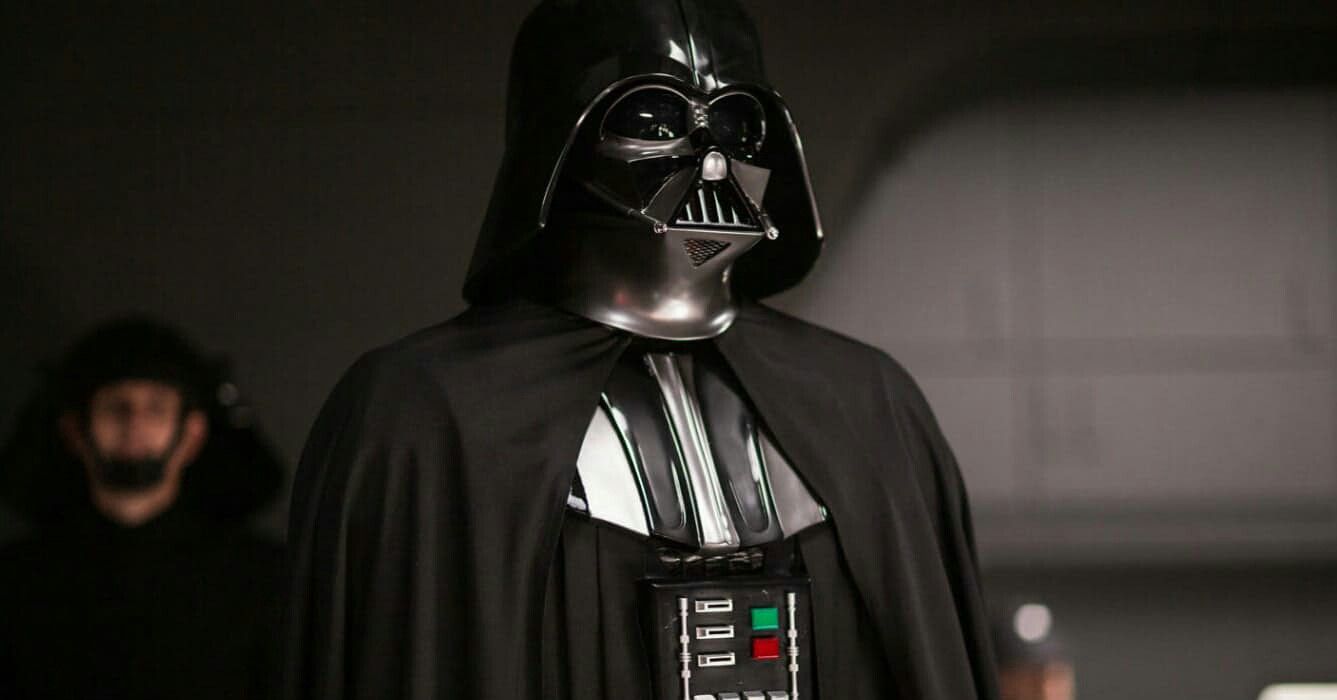
These are not the only major characters from A New Hope to appear in Rogue One to make an appearance, of course. No small bit of the marketing for this film involved showcasing the return of Darth Vader to movie screens. And yeah, Darth Vader’s in this. His scenes are memorable, it’s not like he just walks by in a few scenes. But this is not a Vader movie. His scenes total maybe five minutes, and if he weren’t a classic film villain with his costume in the Smithsonian and millions of fans worldwide, he probably wouldn’t be in this at all.
Vader has two scenes. One, in the middle, sees Krennic travel to Vader’s castle on Mustafar. (In the Legends continuity, Vader had Bast Castle on the planet Vjun. This castle seems analogous to that, but no official name has been released.) Krennic and Vader have a brief conversation about Tarkin’s usurpation of Krennic’s authority over the Death Star, which ends with Vader Force-choking Krennic for annoying him with petty politics. This scene isn’t terribly important, though it is neat to see where Vader spends his time while not leading Imperial legions.
The real showcase for Vader comes at the end of the movie: Alderaanian soldiers are running the Death Star plans to the Tantive IV. The door between ships jams, and from the shadows behind them comes Darth Vader. He works his way through the crowd of soldiers, cutting them down one by one with his lightsaber in a very brutal, violent display of combat prowess we really have never seen in a Star Wars movie. The music for this scene is essentially the Imperial March at half speed, sung by a Duel of the Fates-esque choir, which sums up the mood pretty well: Vader with the ferocity of Darth Maul.
That said, it was still Vader. Many comics & video games have depicted Vader in battle running and leaping and performing all sorts of acrobatics. Here, Vader is confined to a narrow ship corridor, and matches the plodding march shown in the original trilogy. If one were to view Rogue One back-to-back with A New Hope, the character would be consistently portrayed.
Music and Visuals
I mentioned in my review of Star Trek Beyond that I think Michael Giacchino’s score for the Kelvin Timeline films is the best music Star Trek has ever had. I forgot to mention in my review of Doctor Strange that his score there was one of the more memorable Marvel themes. His work here is…not the best or most memorable Star Wars music.
Overall, I liked much of Giacchino’s Rogue One score better than I liked John Williams’ score for The Force Awakens (though no single element of it was as good as Rey’s Theme.) There are a good amount of original tracks which fit the film and also fit the broader set of Star Wars music. I was surprised how many references to the more obscure bits of Williams’ original score there were. But other tracks seemed like the soundtrack to some other space fantasy movie that legally can’t be Star Wars but wants to remind you of it all the time. The first few notes of some track of Williams’ score will sound, only to be followed by some other, similar but different song. Listen to the last few seconds of A Long Ride Ahead, which plays over the appearance of the title, for the most typifying example of what I’m talking about.
I’m willing to cut Giacchino some slack though, because I know that he was brought on at last minute to score the film in a matter of weeks, after Alexandre Desplat left the project. That considered, he did well.
I’m actually glad that Giacchino got the job. If you go through his history as a film composer (Inside Out, Star Trek, Up, Dawn of the Planet of the Apes, The Incredibles) you find a very talented musician with a similar method to Williams’: that is, the use of different forms of the same tune to keep a theme running through a movie. He’s actually worked off a Williams score before, in Jurassic World. I’d like to see him score more Star Wars films now that Williams seems to be retiring.
Director Gareth Edwards (no relation) and cinematographer Greig Fraser deserve some real praise for making the best looking Star Wars film. The different worlds are each distinct and each gorgeous in their own way. From the ruins of statuary on Jehda, to a space station built between two asteroids, to the tropical Scarif base (portrayed by the Maldives, I understand), Rogue One is full of really creative, interesting settings, with the most variety of worlds since Revenge of the Sith. This is all shown in an very understated way, with no big visual setpieces. I thought this subtlety fit the film’s tone quite well.
The finale of the film is really great. The Battle of Scarif is the best ground battle in Star Wars film history, and the best space battle since Return of the Jedi. It was great that they were able to use archival footage and dialogue of the original A New Hope actors to fill the roles of Red and Gold Squadrons. I liked seeing the appearance of an Old Republic-era Hammerhead frigate. I liked being able to follow what was going on in terms of who is striking where why, something that really was never true of any of the prequel battles. This is a new high water mark for large-scale combat in sci-fi movies.
Finally, I’ll mention that the ground-level view of the Death Star’s destructive power was very well visualized.
Complaints
I hope it’s clear by this point that I found this to be a great entry to the Star Wars franchise. It met my high expectations for a Star Wars story. But, in interest of being thorough, I do have a few things that I remember disliking while I was watching. Here’s a list:
- I didn’t care for Vader’s joke at the end of his scene with Krennic. Yes, I know that Vader has had a sense of humor in previous movies, but this line wasn’t funny. It was a Schwarzenegger pun and the only really annoying thing in the film.
- The steady stream of cameos really started to take me out of the movie. It was great to see Bail Organa, Mon Mothma, and Jan Dodonna in the Yavin scenes, and I can take an appearance from C-3PO and R2-D2, if only for tradition’s sake. But did we really need to run into Ponda Baba and Dr. Evazan? I felt like I was the only one in the theater who even knew who those two were. And I had no idea why they were on Jedha.
- Saw Gerrera has a psychic octopus. That’s right. While Bohdi Rook is held captive by Gerrera’s insurgents, he is tortured for information by Gerrera’s pet psychic octopus. The scene was jarring and confusing and should have been left out.
- Actually, Gerrera himself was rather jarring and confusing. I’d seen Gerrera’s first appearance in The Clone Wars, but I had no idea who he was here or why he was doing what he was doing. I got much the same feeling about him as I had about Maz Kanata in The Force Awakens: he might have had a bigger part in the early cuts, but he seemed less important than he should have been in the final product. Whatever point the filmmakers were trying to make by drawing parallels between him and Darth Vader were rather lost on me.
Differences from Trailer
Now, this isn’t a complaint about the movie itself, but I couldn’t help noticing that a lot of content shown in the trailers wasn’t in the film. Jyn’s line “I rebel”, Gerrera’s “What will you become?”, Krennic walking across the Scarif battlefield, long white cape dragging through puddles, and Jyn facing a TIE fighter on the were all prominent parts of the trailers which were nowhere to be seen in the film itself. I understand that this movie went through some serious edits and reshoots before release, which mostly explains it. Still…
Recommendation & Rating
The Force Awakens proved that Lucasfilm under Disney could make a classic Star Wars film. Rogue One proves that they can just as ably give great Star Wars films of other natures, which is, to me, the greater accomplishment. I left both feeling that I’d seen a complete film, and wanting to watch A New Hope again, which, I think, means it hit its mark perfectly, all things considered
This movie took a while to hit its stride, but once it did, it delivered far more than Episode VII ever did. Its ending left its universe with a reinvigorated hope for the Rebellion, and it left me with reinvigorated hope for the franchise.


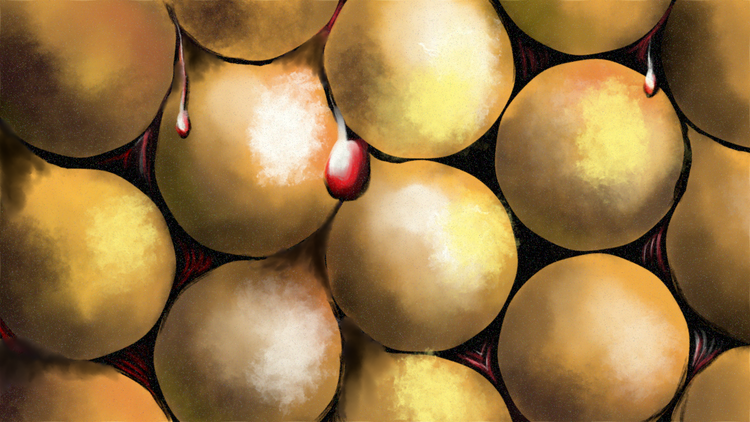
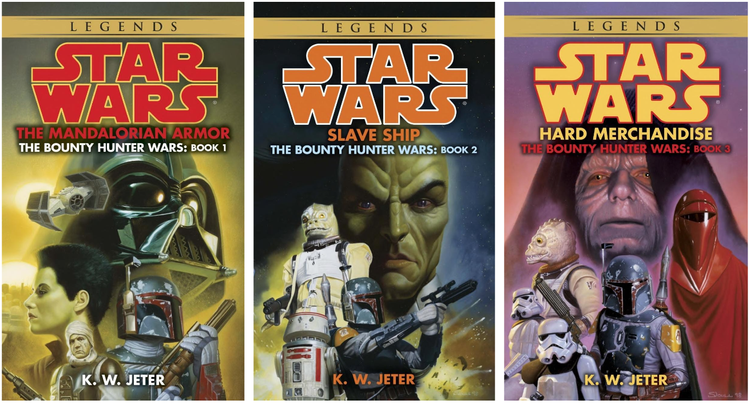


Member Commentary